Metal music has always had a reputation for pushing boundaries—musically, aesthetically, and philosophically. From its earliest roots in hard rock to the darkest corners of black and death metal, the genre has been a breeding ground for rebellion, extreme expression, and, more notably, a fascination with the occult. Over the decades, metal has evolved into various subgenres, each incorporating different elements of the mystical and the arcane, creating a rich and complex relationship between music and the supernatural.
We'll explore how metal has developed over the years, focusing on the genre’s evolution and the significant role the occult has played in metal, from The Satanic bible, Withcraft & Aleister Crowley to murder, rituals & conspiracy.
The Birth of Metal: Darkness from Hard Rock pioneers
Metal as a genre emerged in the late 1960s and early 1970s, born from the darker and heavier sounds of hard rock bands like Led Zeppelin, Deep Purple, and, most notably, Black Sabbath. The latter, often credited and widely debated on as the first true heavy metal band, set the tone for metal’s relationship with the occult. Their self-titled debut album in 1970 featured haunting riffs, lyrics that referenced demons and black magic, and a sound that was miles away from the peace-and-love hippie culture of the time.
Black Sabbath’s lead guitarist, Tony Iommi, along with frontman Ozzy Osbourne, crafted a bleak, sinister atmosphere that mirrored the occult themes in their lyrics. Songs like "Black Sabbath" weren’t just horror for horror’s sake—they evoked a primal fear of the unknown and tapped into the growing interest in mysticism and witchcraft that permeated the counterculture. The bands first hand dealings with the occult and black magic is further examined in the biography from Mick Wall titled 'Black Sabbath - Symptom of the Universe'.
I'd also like to mention Hammer Horror films took a significant approach to the occult, which still holds weight and influence to this day. There's a great read on their inspiration from Dennis Wheatley novels, which includes the story behind the acclaimed film "The Devil rides out". The book in reference further details inspiration from dealings with "real-world" Occultists and rituals titled 'The Devil is a gentleman' for readers who are that way inclined.


This marked the beginning of metal's flirtation with the occult, something that would evolve and deepen as the genre became more extreme in the following decades.
In London, 1975 the phenomenon of Iron Maiden was born. From the early days of their career, Iron Maiden demonstrated a fascination with the supernatural, the esoteric, and the mystical. This wasn’t overt Satanism, as was sometimes alleged during the moral panics of the 1980s, but rather a deep interest in exploring the darker, more mysterious side of human existence through literature, history, and mythology. It was later stated that this song was written about the movie "Damien: The Omen II" - so fear not.
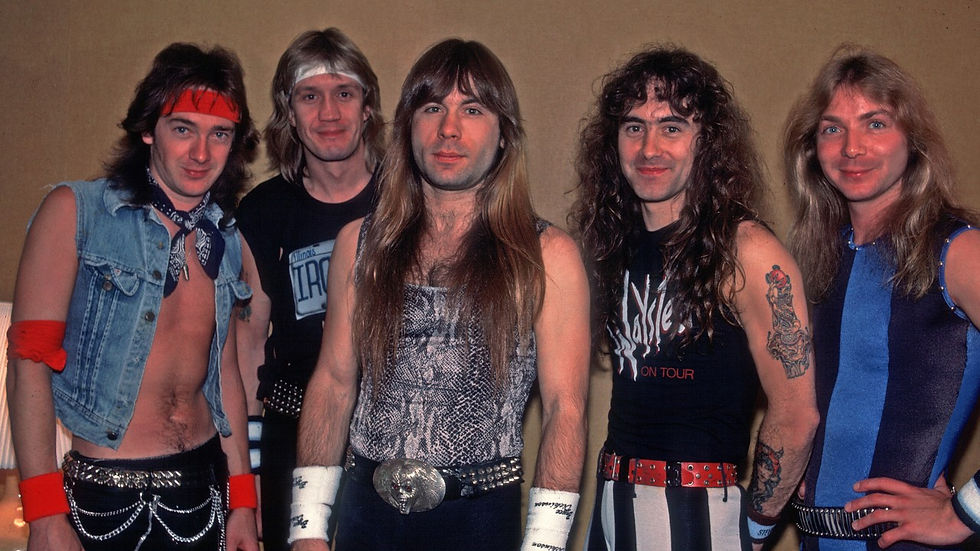
"The Number of the Beast" (1982) Perhaps Iron Maiden's most famous and controversial song with occult themes is "The Number of the Beast." Released in 1982 on their breakthrough album of the same name, the song immediately sparked controversy, with conservative groups accusing the band of promoting Satanism. The song's lyrics reference the biblical Book of Revelation, specifically the infamous passage about the number 666, which has long been associated with the Devil.

With striking imagery of their character Eddie cosplaying many roles and often seen in a Satanic fashion, the band received a lot of backlash early in their career by Conservative groups for this reason alone. Also to note their horror movie influences over the years, including The Wicker Man and their ongoing lyrical themes that are largely based on Biblical sources. A great example is the track 'Moonchild' with the following lyrics "Be the mother of a birth strangled babe, Be the devils own, Lucifer's my name". Enough to rattle the holy.
The last notable band which carried the flag of Satanic symbolism to this day would be none other than English Heavy Metal band, Venom. Debated to be one of the first Black Metal bands. This band entered their careers in 1979 and at the near end of the NWOBHM era. Their albums are renown for their imagery of a satanic goat (or Baphomet) with albums such as 'Black Metal' & 'Welcome to Hell'.

Satanic Panic: The 80's Hysteria
In the 1980s, a wave of fear swept through the United States and beyond—fear that Satanism was infiltrating every corner of society, from schools to cities. Known as the "Satanic Panic," this moral hysteria ignited deep suspicion, particularly towards certain forms of popular culture. Among the prime targets of this societal frenzy was heavy metal music, which became the subject of intense scrutiny, outrage, and censorship.

It originated in the early 80's and predominantly in the US, fuelled by media reports, Christian fundamentalist groups, and some high-profile court cases involving claims of ritual abuse. The panic reached its peak by the mid-to-late 1980s, with reports of Satanic symbols, sacrifices, and witchcraft becoming common talking points in newspapers, on television, and in churches.

One of the most infamous incidents tied to the Satanic Panic was the "McMartin Preschool Trial" in 1983, where workers at a California daycare center were accused of ritualistic child abuse. Although no evidence was ever found to support the claims, the case created a moral firestorm, prompting parents and authorities to become hyper-vigilant.
Notorious artists that sparked the outrage were Ozzy Osbourne's Suicide Solution track from the album 'Blizzard of Oz' (1984) which lead to a court case in 1986 after a teenager committed suicide. The boys parents had blamed Ozzy Osbourne for glorifying suicide, whereas the true meaning was in relation to substance abuse. Case dismissed.
One of the most famous legal battles was Judas Priest’s 1990 trial, where the band was accused of causing the suicides of two young men, James Vance and Raymond Belknap, in 1985. The plaintiffs claimed that subliminal messages in the band’s song "Better by You, Better Than Me" drove the two young men to harm themselves. The case garnered national attention, though the court eventually ruled in favour of Judas Priest, with the judge concluding that there was no evidence of subliminal messaging.
Mercyful Fate were also the subject of controversy due to their satanic imagery, and one of their songs "Into the Coven" (from Melissa) later gained notoriety for appearing as one of the PMRC's "Filthy Fifteen".
The heavyweights: Thrash & Death Metal
As the 1980s were roaring, metal underwent a major transformation throughout the before mentioned hysteria. Thrash metal, pioneered by bands such as Metallica, Slayer, and Megadeth, introduced speed and aggression, often with politically charged and at times apocalyptic lyrics. I won't bore you with what you already know, so it'll be brief. Thrash wasn’t originally heavily steeped in occultism, Slayer's album Hell Awaits introduced Satanic imagery and themes of an eternal damnation, further integrating the occult into extreme metal’s evolving identity.

Fun Fact: Slayer's frontman, Tom Araya is in-fact a practising/praying Catholic. Ironic.
It was in the development of death metal and black metal that the occult truly took root. Death metal bands like Morbid Angel and Deicide (to name the very least) explored themes of Satanism, anti-Christianity, and ancient rituals in their music heavily. For these bands, the occult was not just a thematic choice but an outright rebellion against mainstream religion and societal norms. Let's also not forget Nile with their love and dominating influence of Ancient Egyptian mysticism & rites, as well as a nod to H.P Lovecraft.
The harsh, guttural vocals, breakneck speed, and chaotic song structures of death metal reflected a world in spiritual chaos, where the lines between reality and the supernatural blended to form something unworldly. There are a plethora of anti-Christian themed death metal bands that also talk of, well, Death. However, it would be better to continue to the topic at hand.
Black Metal: Satan's finest
Of all metal subgenres, none has embraced the occult as deeply and fervently as black metal. Emerging in the early 1990s in Scandinavia, black metal bands such as Mayhem, Emperor, and Burzum were not only obsessed with Satanic imagery but also drew on ancient paganism, Norse mythology, and occult philosophies.
In black metal, the occult wasn't just imagery—it was a worldview. Many early black metal musicians considered their art to be a vehicle for spiritual liberation through chaos, darkness and downright misanthropy. These bands rejected the organized religions of their upbringing, especially Christianity, which they saw as oppressive. Instead, they turned to pagan beliefs, Satanism, and occult practices as a form of empowerment and rebellion. This also lead some black metal bands (early & new) to reinforce their evil tangents with far-right political ideologies.
The Norwegian black metal scene, in particular, became infamous for its association with church burnings and other acts of violence, which some participants saw as direct manifestations of their beliefs. For these musicians, the occult was not just stagecraft; it was a call to action, a reclamation of ancient spiritual practices violently suppressed by Christianity.
Mayhem's De Mysteriis Dom Sathanas or Darkthrone’s Transilvanian Hunger are an obvious two legend status albums in this genre, but I think it is only fair that some light is given to black metal artists, such as Dissection who dig through the mass of hill top occultism and incorporate a more in-depth view on occultism. For example, Dissection, on their album Reinkaos. This album forged songs, such as Xepher-Ir-Set, which (if you're aware) relates to the Temple of Set and it's organisations initiatory rites.

Band names alone, such as Watain infused their own understanding of the occult in their name, for example the word Wat is a translation of the word temple in Thai and AYIN (אַיִן) is a Hebrew term for the Kabbalistic meaning of the primordial void of infinite nothingness before creation. Thus the name WATAIN can be read as "Temple of Ain".
Then there's Behemoth's Nergal often boasts his Yoga practises, as well as using excerpts in a song 'O Father O Satan O Sun' from “Liber Samekh”, being “ the ritual employed by the Aleister Crowley for the Attainment of the Knowledge and Conversation of his Holy Guardian Angel”.
Of course, this is an extremely limited explanation of the boundless limits of black metal and the occult.

Modern Metal its initiates
With the above information, it would seem near impossible to bring shock value to people's eyes, ears & stages it would seem. Yet many attempt. A great example would be the breakthrough band Ghost (formerly Ghost BC) with their earlier tongue in cheek Satanic theatrics and lyrics to their deeper and forthright lyrics on Freemasonry with the song 'Square Hammer', with the following "Are you on the square, are you on the level..." As their frontman 'Tobias Forge' also proudly confirmed he was a member of the Masonic order of the Swedish Rite. He's also come under fire by old band mates in lawsuits that where they claimed he was favoured in court over his ex-members for this reason.

Today’s occult-themed metal is not just about Satanism or anti-religious rebellion; it draws on a wide variety of spiritual and esoteric traditions, from paganism and Norse mythology to Eastern mysticism, Gnosticism, and even science fiction. The modern occult in metal has become a vehicle for exploring deeper philosophical questions about the nature of existence, consciousness, and humanity’s relationship with the universe.
Take bands like Mgła, who not only keep the Satanic and anti-Christian elements of traditional black metal alive but also incorporate philosophical and mystical concepts.
Meanwhile, bands like Batushka have taken black metal’s fascination with religious iconography and the occult in a different direction. Batushka incorporates Eastern Orthodox Christian rituals, complete with chanted liturgies and Byzantine iconography, turning the genre’s anti-Christian sentiment on its head by reinterpreting the sacred as something mystical and occult. By the way - does anyone know what's going on with that band ? Seriously.

Doom metal has always had a special relationship with the occult, ever since it's predecessors 'Black Sabbath'. With its slow, crushing riffs and heavy atmosphere, doom metal naturally evokes feelings of dread, mystery, and the supernatural. Modern doom bands, however, have deepened this connection, often using occultism as a lens to explore themes of despair, the afterlife, and existential dread.
Electric Wizard, one of the most well-known modern doom bands, exemplifies this perfectly. Their music is heavily influenced by the occult, often referencing 1970s horror films, witchcraft, and the dark side of human nature. Albums like Dopethrone (2000) have become iconic within the genre, merging occult themes with a hazy, psychedelic sound that captures the feeling of being pulled into the abyss.
Other doom and stoner metal bands like Windhand and Blood Ceremony also draw on the occult, but with a different twist. Windhand’s music, for instance, has a more ethereal, ghostly quality, with lyrics that often reference spirits, haunted places, and the mystical power of nature.
In recent years, genres like post-metal and progressive metal have also embraced occultism, though often in more abstract or philosophical ways. Bands such as Tool, The Ocean, and Mastodon are perfect examples of how modern metal uses the occult to explore deeper metaphysical questions.
Tool, in particular, has long been associated with occult and mystical ideas. Their music often delves into subjects like sacred geometry, the nature of consciousness, and the search for spiritual truth. Albums like Lateralus (2001) are built around occult principles, particularly those of Aleister Crowley and Carl Jung’s theories of individuation. The band’s use of complex time signatures and multi-layered lyrics mirrors the complexity of the occult philosophies they explore, making their music both a cerebral and mystical experience.
Similarly, Mastodon's albums—such as Crack the Skye (2009)—incorporate elements of the occult, but in ways that are deeply personal and reflective. Crack the Skye deals with astral projection, the soul’s journey, and the crossing of dimensions, all rooted in metaphysical and esoteric traditions.

Occultism in the Rise of Ritualistic and Atmospheric Metal
One of the most interesting developments in modern metal is the rise of bands that incorporate occult themes into ritualistic or atmospheric music. Bands like Cult of Fire, Sunn O))), and Wolves in the Throne Room have created an experience where the occult isn’t just present in the lyrics but is embedded into the atmosphere of the music itself.
Sunn O))), for instance, is known for their minimalist, droning compositions that are more akin to a religious ritual than a traditional metal performance. Their music often evokes feelings of transcendence, channeling the occult not through direct lyrical references but through a deeply spiritual and meditative sound. For fans, attending a Sunn O))) show can feel like entering into a dark temple where sound itself becomes the ritual.
Wolves in the Throne Room, on the other hand, draw on pagan and nature-based spiritualities to create a sound that is deeply atmospheric and connected to the natural world. Their music often feels like an invocation of ancient spirits or a tribute to the earth itself, echoing themes of ancient pagan practices, particularly those rooted in the forests and mountains of their native Pacific Northwest.
Lets not forget bands like Wardruna who weave their music through their Pagan/ Animisim Northern European roots. Danheim are another note worthy artist.
The Endurance of Metal & the Mystics
From its birth with Black Sabbath to its modern expressions in black, doom, and progressive metal, the occult has been and continues to be an essential part of metal’s DNA. It represents more than just rebellion; it’s a gateway to exploring deeper truths, challenging societal norms, and tapping into the primal forces of the universe. As metal continues to push boundaries, the occult will remain a powerful force, guiding the genre into ever darker, more mystical, and transcendent realms.



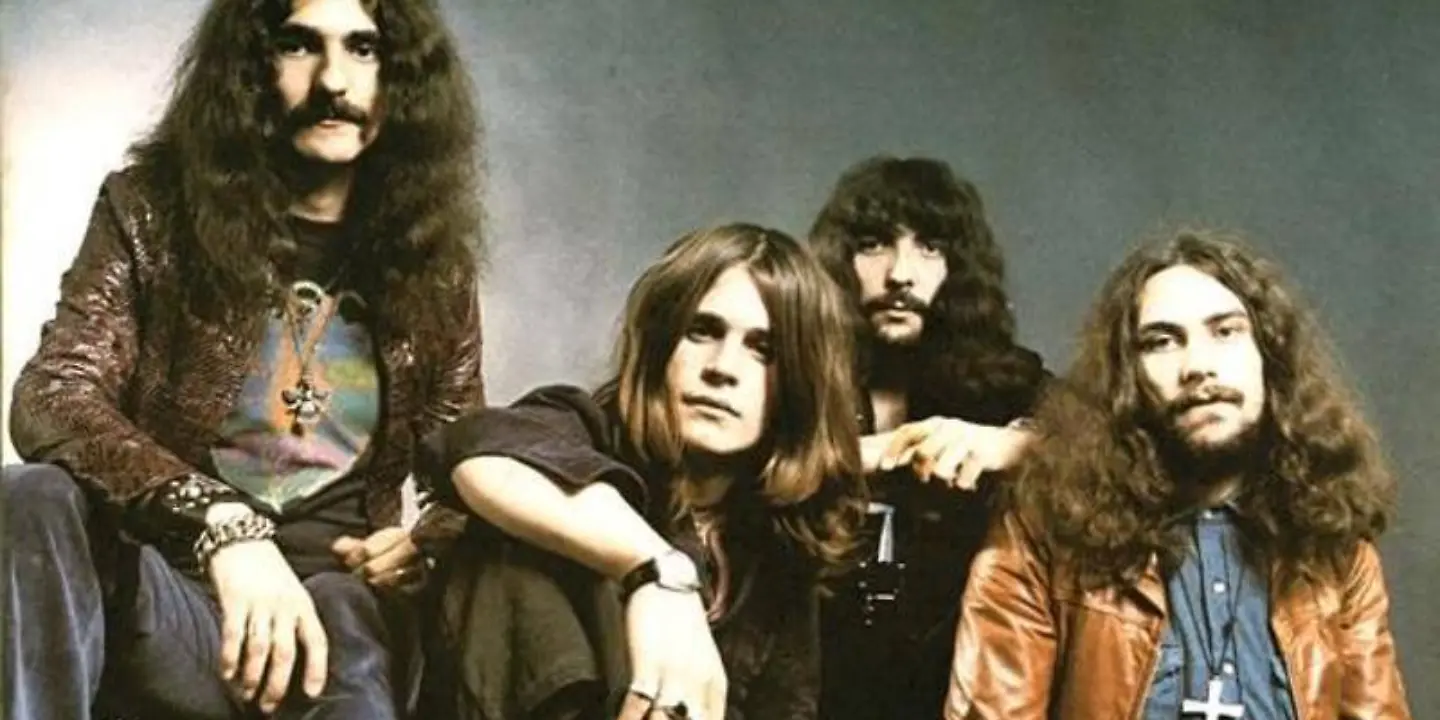
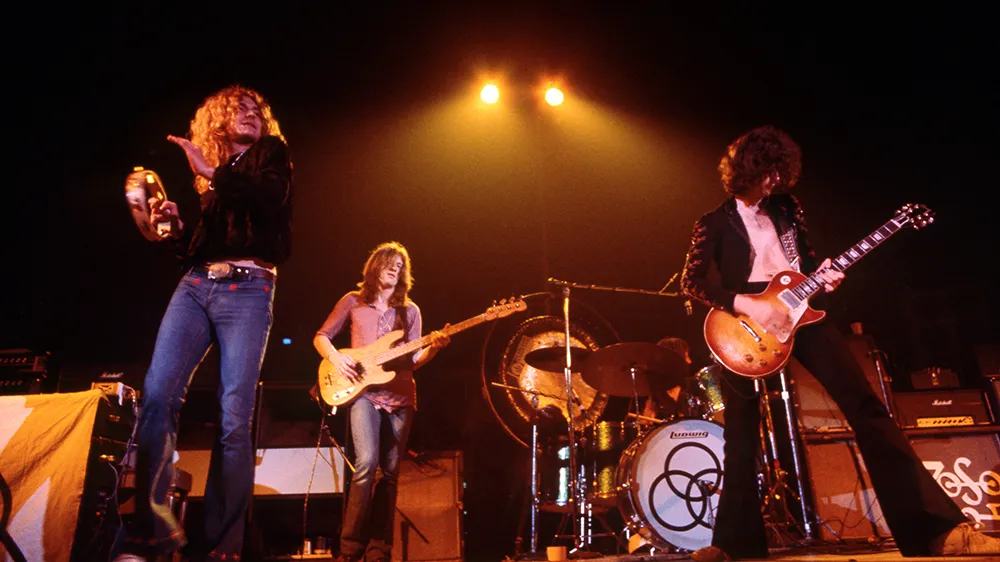









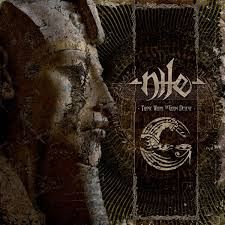


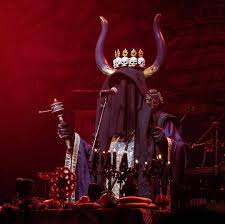




Comments